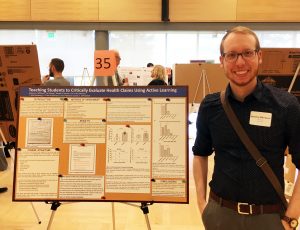Originally published in 2018 on the UWB Digital Learning and Innovation Blog.
by Becca Price
I keep reinventing myself. It’s one of the aspects of academia that I’ve enjoyed the most. I started studying the way different species of sea slugs were related, then I started looking at the history of sea shells that evolved 100s of millions of years ago. And when I came to UWB 12 years ago, I realized how much we, as a community of educators, can do to improve the way students are learning science. My interest in science education—especially around biology—was born. That took me, in turn, to teaching new PhDs how to teach college science.
My interests have broadened again, now with the goal to welcome more people into the vibrant research on biology education. The leading journal in our field, CBE-Life Sciences Education, started a new feature called “Anatomy of an Education Study” that introduces the research methods common within the field. I, along with Clark Coffman from the Iowa State University, are annotating the articles in this feature with five lenses in mind—a format inspired by the lenses that Science uses in their annotations. We highlight the background, pointing readers to classic texts and debates; we offer succinct definitions of the jargon that inevitably creeps into a research area; we explicate the research methods and design that the authors use, annotations that help an audience more used to biological research than the social science of how students learn biology; we highlight the instructional implications of the work that the authors discuss; and, lastly, we offering writing tips, to orient readers to the conventions of articles in this field.
The first two sets of annotations that Clark and I wrote focus on different qualitative methods, in one case for testing whether a survey measures what is intended, and the other for using the knowledge of experienced instructors and researchers to construct a list of teaching strategies that unpack the idea of scientific teaching.
Science education research has changed a lot in the last decade, as researchers become more comfortable navigating the many methods used in this interdisciplinary field. I hope that the “Anatomy of an Education Study” might help you become familiar with the tool…and maybe, you are developing a comparable tool in another field that can orient me the next time I reinvent myself.




